 GELFAND’S WORLD--This being the antepenultimate column of 2015 for me, it seems appropriate to tell the story of a friend of mine who had to deal with corporate America. But this wasn't the usual corporate screw job by a credit card company or by a cell phone company. This was a combination screw job by both a credit card company and a cell phone company together, in one and the same incident.
GELFAND’S WORLD--This being the antepenultimate column of 2015 for me, it seems appropriate to tell the story of a friend of mine who had to deal with corporate America. But this wasn't the usual corporate screw job by a credit card company or by a cell phone company. This was a combination screw job by both a credit card company and a cell phone company together, in one and the same incident.
There are two reasons to tell this story in these, the final weeks of the year. First, it is illustrative of what our society is becoming, what with the big corporations turning us all into unpaid clerks, and customer service becoming customer disservice. The other reason is that I get to use the word antepenultimate in a published piece. You don't get to do that very often, much less twice in the same place.
So here is Rod's story.
He got a credit card statement a few days ago. There was a charge for $118 for his Sprint cell phone service. Only one problem -- he doesn't use Sprint. The charge was completely bogus.
It wasn't even identity theft. He didn't have dozens of other charges for expensive luggage or diamond rings. It was just this one charge. So Rod did what any normal American would do. He called the number on the back of his credit card and explained. He told them that he doesn't have an account with Sprint. Therefore, they shouldn't be charging him for Sprint service.
"You'll have to call Sprint" he was told. He again explained that he doesn't have an account with Sprint, but he was politely told to bug off. Apparently, this was the best that the voice on the other end of the line could do for him. So he called Sprint.
"You need to talk to your credit card company." It seemed that Sprint did not have any record of his account, which isn't terribly surprising since he doesn't have an account with Sprint. Apparently, the Sprint clerk didn't have an icon on his computer screen labeled non-customers who don't have accounts with us but just got billed $118 anyway, and now they're mad.
Rod politely explained that the credit card company had just given him the exact same advice except in reverse. This attempt was, as they say in the novellas, to no avail.
There's a reason we call it the runaround. You end up running in a giant circle from one customer service desk to the other, and then back again, ad nauseum. The more common form of runaround is within the offices of a single corporation. You get sent from billing to customer relations to billing, and so on. But in this case, Rod was getting carommed between two separate corporations.
I'm happy to report that in this holiday season, I have a happy ending to this story. Mind you, it took Rod another 3 hours of his life to achieve that level of happiness, but he did get there. Here's how.
Rod is what I would call a particularly assertive sort of fellow. You may remember when books on assertiveness were all the rage. Many people bought them, but few seem to have absorbed the lessons. Rod didn't need to buy a book on assertiveness training. He seems to have been born with it.
Rod simply gave up on the 800 number folks and found the number for the cell phone corporate headquarters. It's actually not all that hard to do. Corporate telephone numbers are not state secrets. Mind you, the clerk on the other end of the 800 number will usually refuse to give you the number of corporate. You will get some lame excuse that the poor clerk just doesn't have that number. Feel free to say that you don't believe him, but don't belabor the point.
Just go online and look for the corporate website. Find a telephone number on it. You could try calling the public relations number, as they will always call back eventually. There's also a number called investor relations. I don't exactly know what they do, but it sounds like they would be the type to call back. Usually you can just call the corporate headquarters and ask to be connected to the office of the president.
You won't get direct access to the CEO, but some nice person will answer, and you can explain your problem. That person will generally turf you to the person who can do you some good. So Rod got corporate, and explained that Sprint had billed his credit card number for service he doesn't have.
Corporate figured out what was wrong. It's actually a little outrageous, if not exactly astonishing. Sprint, as in so many other companies, allows the customer to call in to pay a bill. But Sprint doesn't want to waste money paying clerks to take those payments. Instead, the computer on the other end of the line has voice recognition software. It asks you questions, and you give it answers.
Sometimes the voice recognition software understands your reply correctly.
In Rod's case, it did not. Somebody else called into Sprint's system, gave it a credit card number, and Sprint dutifully charged Rod for the service. Rod inferred from his conversation with Sprint that the voice recognition system had simply misunderstood somebody's speech. It happens from time to time.
We can also imagine a different possibility, that this somebody was trying to pay a bill by using a credit card number that was not his own. But this sounds a little farfetched. Why engage in credit card fraud when you can simply avoid paying the bill?
Whatever the glitch was, Rod had gotten billed that $118. And here is the crux of the matter. When Rod got charged that amount for something he never purchased, the burden should have been on the credit card company. Or at the very least, the dispute should have been between the credit card company and Sprint. The two giant corporations should have determined who owed what and to whom, rather than expecting Rod to fix their mistakes.
The burden should never fall on Rod, since it was not his purchase. Yes, it is up to Rod to inform the credit card company that there has been an incorrect charge, but that should have been the end of it for him. The clerk at the credit card company should have been able to see that Rod did not have Sprint service at anytime up to this particular billing. and should have remedied Rod's problem on the spot. Then Sprint could have resolved its billing error as it saw fit, perhaps by contacting its actual customer.
Because neither clerk could solve Rod's problem, or because they labored under rules that prevented solving Rod's problem, Rod was forced to go to the corporate offices at Sprint.
By going to corporate, Rod got his credit card charge reversed immediately. His credit card company showed the reversal of the charge within the hour. All is right with the world, and Rod was only out the 3 hours of calling that it took him.
Here's the take-home lesson: Give that guy on the other end of the 800 number his one chance to fix your problem, but don't accept getting the runaround. Escalate the problem sooner rather than later, and thereby get hold of somebody who has the authority to fix your problem. One reminder -- if you are connected to the 800 number and getting the usual runaround, asking for the supervisor usually isn't the effective form of escalation. Even if you get a supervisor, whatever that might be, you are still dealing with somebody who doesn't have the authority to fix your problem.
A very short story
Here's another example: One woman I heard from was trying to sign up for health insurance using the Covered California system. The insurance company mistakenly applied her December 2015 payment to January, 2016, and then told her that she didn't have insurance for December. A series of clerks on 2 or 3 continents promised her that the problem would be fixed in 5-7 days. Three weeks later, still no joy on the December insurance. A call to the office of the Insurance Commissioner of California sped things up remarkably.
The overall strategy
Mind you, I am not suggesting going right to the top every time you have a corporate version of the sniffles. Some things really are just the sniffles, and not pneumonia. But when the clerks don't deliver, it's time to go to corporate.
Notice that we, the consumers, didn't create the system where we have to be so demanding. But in this modern era, corporations save money by getting rid of the local staff, and then you are supposed to try to fix your problems by calling that 800 number. What you get are boiler room staff who are reading off of a prepared script. When I run into that, I say, "Excuse me, but could you please stop reading the script for a moment so I can explain the problem." Once in a while it works.
One last story
It was a while back, probably a couple of decades, but I still remember how a corporate screw job turned into a source of humor.
One day, I got a letter in the mail from a new toll road authority down in Orange County. I was vaguely aware that Orange County had OK'd a toll road running parallel to the 5, but that was about all I knew. Nevertheless, this letter said that I had been driving on their toll road without paying, and now I was being assessed the fee and a fine.
This was all a little strange, because I could state with certainty that I had not been anywhere near Orange County on the day of the alleged violation. I had not even been into Orange County within several weeks of that day, either before or after.
But this toll road authority letter explained that they had a photograph of my car on their road. They had some automated system that took photos of cars that didn't use their system of payment, whatever it was at the time.
That story about the photo was peculiar in the same way as Rod's more recent story. In each case, corporations expected us to jump through their hoops. I called the company and asked them to send me a copy of the photo. After all, if I am being charged with something, I have a right to see the evidence. The person on the other end of the line seemed a little surprised, but promised to get back to me.
A day later, I got a return phone call. The toll road representative sheepishly explained to me that the license plate in the photo had been read incorrectly. My citation would be erased.
I remained a little dissatisfied, because in my experience, what some clerk promises over the phone doesn't always come to fruition. Suppose some other office in the toll road authority didn't get the memo, and sent me another dunning letter? So I asked that they send me a copy of the photo for my files, so that I would be able to demonstrate by actual evidence that my car was not on their road at that time.
You can probably guess what the answer was. They refused to send me a copy of the photo. They claimed that this would violate the privacy of the driver of the other car. That was an inadequate answer, to say the least. The photo was a necessary part of my defense if I ever needed to defend myself. You might even call the toll road's argument stupid. But I never did get that picture for my files.
Dealing with this new digital age
There are all sorts of issues with regard to this digital era and the control it has over us. Rod's run-in with the credit card company and the cellular phone system is illustrative. The phone company couldn't be bothered to put adequate safeguards in place to protect the integrity of its billing system. The credit card company left it to Rod to fix the mess, even though the credit card company could have done a simple charge-back to Sprint and left it to Sprint to sort things out.
A new threat to our privacy
The following is a bit of a change of subject, but bear with me. There's one more device that will potentially be a new threat to our privacy. It's the drone. If you haven't seen one up close, come down to the harbor, where we see them almost every day. Drones can be barely the size of your hand, or they can be a little bigger. You can buy them in a drone store (I didn't make this up) or from Best Buy. And the drones have look-down capabilities that give the creep on the next block the same sort of ability to violate your privacy that we once attributed to the NSA.
By coincidence, drones are not only dangers to our privacy, they are dangers to civil aviation and the aircraft that fight brush fires. For this reason, the FAA is now about to adopt a rule that drones need to be registered. There will also be an age requirement for such registration. I don't think that this will solve the privacy issue, but it's a start.
(Bob Gelfand writes on culture and politics for City Watch. He can be reached at [email protected]. Note: Rod is the pseudonym for a real person.)
-cw
CityWatch
Vol 13 Issue 102
Pub: Dec 18, 2015





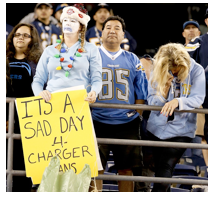 The year 2015 has been notable for the discussions about bringing either one or two professional football teams to the area. Luckily, the possibility of a stadium at the intersection of the 10 and the 110 freeways died a quiet death. This was not for lack of bowing and scraping by the city's elected officials. They were willing to turn downtown into an even worse traffic nightmare than it is now. This was in spite of the weight of evidence that shows that professional sports teams don't bring in net revenue or jobs to the areas they move into.
The year 2015 has been notable for the discussions about bringing either one or two professional football teams to the area. Luckily, the possibility of a stadium at the intersection of the 10 and the 110 freeways died a quiet death. This was not for lack of bowing and scraping by the city's elected officials. They were willing to turn downtown into an even worse traffic nightmare than it is now. This was in spite of the weight of evidence that shows that professional sports teams don't bring in net revenue or jobs to the areas they move into.  THE UNITED STATES OF NOW--Which political party loves America? Not the United States that once existed, but the flesh-and-blood nation that we all live in now.
THE UNITED STATES OF NOW--Which political party loves America? Not the United States that once existed, but the flesh-and-blood nation that we all live in now.
 DEAR FATHER CHRISTMAS-So my friend has asked me to write to you and I have to confess it's been hard to know what to say. Mainly because like most adults I feel preposterous asking anything of you since our time with you is surely done.
DEAR FATHER CHRISTMAS-So my friend has asked me to write to you and I have to confess it's been hard to know what to say. Mainly because like most adults I feel preposterous asking anything of you since our time with you is surely done.  (Benedict Cumberbatch is an actor who writes occasionally for the
(Benedict Cumberbatch is an actor who writes occasionally for the  TRUTHDIG-Update: On Friday the Sanders campaign sued the Democratic National Committee, demanding that it restore the campaign’s access to key information on voters. Then, on Saturday, it announced that the
TRUTHDIG-Update: On Friday the Sanders campaign sued the Democratic National Committee, demanding that it restore the campaign’s access to key information on voters. Then, on Saturday, it announced that the  INSIDER REPORT-The distinct smell of natural gas penetrates homes for miles around the leaking Aliso Canyon natural gas “storage facility.” By storage facility we mean an abandoned oil well drilled in 1955 that So Cal Gas decided to fill with pressurized natural gas. But to describe this as a leak is akin to calling the BP oil spill in the Gulf of Mexico a leak.
INSIDER REPORT-The distinct smell of natural gas penetrates homes for miles around the leaking Aliso Canyon natural gas “storage facility.” By storage facility we mean an abandoned oil well drilled in 1955 that So Cal Gas decided to fill with pressurized natural gas. But to describe this as a leak is akin to calling the BP oil spill in the Gulf of Mexico a leak.  PERSPECTIVE-Russian premier Vladimir Putin recently lavished praise on Donald Trump.
PERSPECTIVE-Russian premier Vladimir Putin recently lavished praise on Donald Trump. OTHER WORDS-The holiday season is a time for nostalgia. We watch
OTHER WORDS-The holiday season is a time for nostalgia. We watch  GUEST WORDS--10. An abject apology from Donald Trump for being a Birther; anti-immigrant; a builder of buildings that look like big Dunhill cigarette lighters; the world's most punishing source of Green Cards for women who marry him to get one; daring to rate women as no longer Tens when he himself has never been a One; going bankrupt multiple times in order to stick other people with his bad-judgment debt; pretending he ever hit a home run when actually, he was born on Third Base -- and oh, yes, setting the hair weave industry all the way back to Rogaine.
GUEST WORDS--10. An abject apology from Donald Trump for being a Birther; anti-immigrant; a builder of buildings that look like big Dunhill cigarette lighters; the world's most punishing source of Green Cards for women who marry him to get one; daring to rate women as no longer Tens when he himself has never been a One; going bankrupt multiple times in order to stick other people with his bad-judgment debt; pretending he ever hit a home run when actually, he was born on Third Base -- and oh, yes, setting the hair weave industry all the way back to Rogaine. PENSION REFORM-A pair of potential ballot initiatives written to overhaul California’s public pensions could face a rough road, according to a new poll.
PENSION REFORM-A pair of potential ballot initiatives written to overhaul California’s public pensions could face a rough road, according to a new poll. RECYCLING DEBATE-You have to hand it to libertarian writer John Tierney. He doesn’t give up easily. His long-winded 1996 article, “
RECYCLING DEBATE-You have to hand it to libertarian writer John Tierney. He doesn’t give up easily. His long-winded 1996 article, “ In their
In their  DRUG POLITICS--Some folks are just so awful and scurrilous that jail is almost too good for them. As with the bankers and investment companies that destroyed and burned up the life savings of many Americans since the turn of the century (a form of murder, from a financial point of view), pharmaceutical companies have allowed life-saving medicines (many that have been out for decades and are very inexpensive to make) to skyrocket in price ...
DRUG POLITICS--Some folks are just so awful and scurrilous that jail is almost too good for them. As with the bankers and investment companies that destroyed and burned up the life savings of many Americans since the turn of the century (a form of murder, from a financial point of view), pharmaceutical companies have allowed life-saving medicines (many that have been out for decades and are very inexpensive to make) to skyrocket in price ... GELFAND’S WORLD--This being the antepenultimate column of 2015 for me, it seems appropriate to tell the story of a friend of mine who had to deal with corporate America. But this wasn't the usual corporate screw job by a credit card company or by a cell phone company. This was a combination screw job by both a credit card company and a cell phone company together, in one and the same incident.
GELFAND’S WORLD--This being the antepenultimate column of 2015 for me, it seems appropriate to tell the story of a friend of mine who had to deal with corporate America. But this wasn't the usual corporate screw job by a credit card company or by a cell phone company. This was a combination screw job by both a credit card company and a cell phone company together, in one and the same incident. 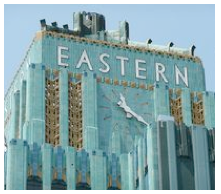 MY TURN--When Councilman Felipe Fuentes (District 7) evicted tenants in the North Valley City Hall, he included a police substation as well as the Sunland Tujunga Neighborhood Council in his purge. Even though a hue and cry was raised by his constituents and this writer; we were told that he had every right to do that. Apparently, who occupies city property is under the purview of the Councilmember in that district.
MY TURN--When Councilman Felipe Fuentes (District 7) evicted tenants in the North Valley City Hall, he included a police substation as well as the Sunland Tujunga Neighborhood Council in his purge. Even though a hue and cry was raised by his constituents and this writer; we were told that he had every right to do that. Apparently, who occupies city property is under the purview of the Councilmember in that district. 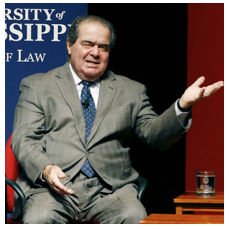 AFFIRMATIVE ACTION REBOOT-Supreme Court Justice Antonin Scalia’s (photo) seeming suggestion this week that students of color would be better off at “a slower-track school where they do well” is not only offensive, it’s wrong.
AFFIRMATIVE ACTION REBOOT-Supreme Court Justice Antonin Scalia’s (photo) seeming suggestion this week that students of color would be better off at “a slower-track school where they do well” is not only offensive, it’s wrong.  CALIFORNIA WATCH--As Governor Jerry Brown touted California’s environmental initiatives and prodded world leaders in Paris to embrace tougher environmental policies during the United Nations summit on climate change, it was instructive to look back at how one of Brown’s top environmental priorities suffered a major defeat in the California Legislature this year.
CALIFORNIA WATCH--As Governor Jerry Brown touted California’s environmental initiatives and prodded world leaders in Paris to embrace tougher environmental policies during the United Nations summit on climate change, it was instructive to look back at how one of Brown’s top environmental priorities suffered a major defeat in the California Legislature this year.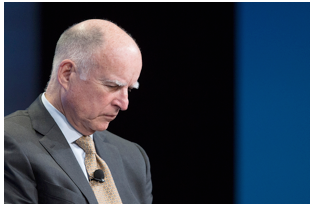 In speaking against the petroleum reduction measure, the bill’s opponents warned that it could result in gas rationing and prohibitions on sport utility vehicles. Opponents, including some Democratic lawmakers, also claimed that cutting petroleum use would be disproportionally harmful to residents of the Central Valley, whose long commutes and dearth of public transportation make dependence on automobiles – and fuel – a certainty.
In speaking against the petroleum reduction measure, the bill’s opponents warned that it could result in gas rationing and prohibitions on sport utility vehicles. Opponents, including some Democratic lawmakers, also claimed that cutting petroleum use would be disproportionally harmful to residents of the Central Valley, whose long commutes and dearth of public transportation make dependence on automobiles – and fuel – a certainty.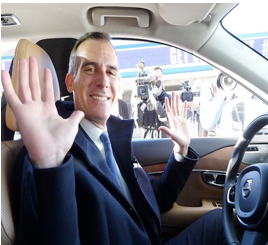 NO SUBSTITUTE FOR WALKABLE STREETS--At the center of UCLA’s campus, there’s a banner advertising some of the university’s newest groundbreaking research. It features the outline of a small vehicle and reads, “The 405 is a joyride … in a driverless car.”
NO SUBSTITUTE FOR WALKABLE STREETS--At the center of UCLA’s campus, there’s a banner advertising some of the university’s newest groundbreaking research. It features the outline of a small vehicle and reads, “The 405 is a joyride … in a driverless car.”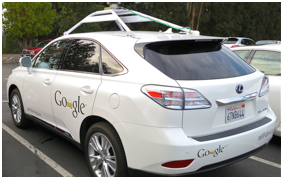 All this portends a brighter future for LA and similar cities. But even today, the truth is that my car-free lifestyle is very doable — sometimes even convenient. LA has a robust bus system that I use to commute to UCLA, and so far I’ve found it to be reliable (LA’s bus and train networks combine for about 1.5 million weekday boardings, third in the nation after New York and Chicago). My home in the Palms neighborhood is a 15-minute walk from a light rail stop that takes me to Downtown LA, which has recently come into its own as a cultural and culinary hotspot. Almost everything I need is within biking distance of my apartment, and when I have to, I can rely on the generosity of friends with cars.
All this portends a brighter future for LA and similar cities. But even today, the truth is that my car-free lifestyle is very doable — sometimes even convenient. LA has a robust bus system that I use to commute to UCLA, and so far I’ve found it to be reliable (LA’s bus and train networks combine for about 1.5 million weekday boardings, third in the nation after New York and Chicago). My home in the Palms neighborhood is a 15-minute walk from a light rail stop that takes me to Downtown LA, which has recently come into its own as a cultural and culinary hotspot. Almost everything I need is within biking distance of my apartment, and when I have to, I can rely on the generosity of friends with cars.
 And that's what leads to the next point. If it's not the local police, who does make the decision to keep all these jails closed? It's not going to be a deep revelation that this kind of decision comes out of the city's budget process. Could the city find the dollars to open the Harbor Area Jail if it were considered a weighty enough priority? Obviously it could. But that decision would come at the cost of other priorities.
And that's what leads to the next point. If it's not the local police, who does make the decision to keep all these jails closed? It's not going to be a deep revelation that this kind of decision comes out of the city's budget process. Could the city find the dollars to open the Harbor Area Jail if it were considered a weighty enough priority? Obviously it could. But that decision would come at the cost of other priorities. 












